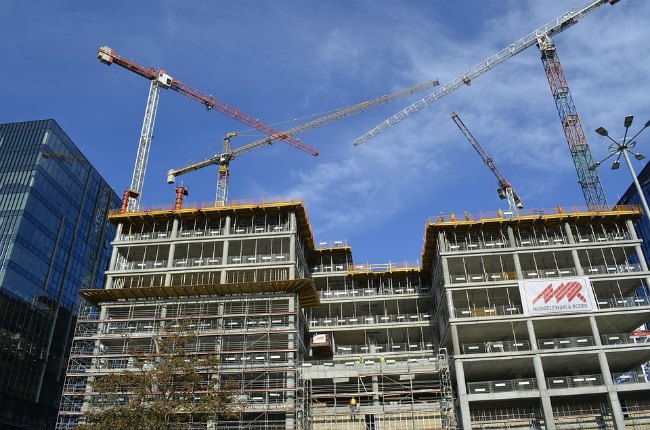
Construction management for risk is one of the most vital parts of a construction project. You don’t know where and when you would have to face any risk related to your construction. Risk management helps to go through every construction process smoothly and make it a success. With the help of risk construction management, you can mitigate the risks in the construction project. To accurately sort out the risks of construction management first, you will have to identify the risks that you might face. The risks are not limited only to safety. There are various other risks like financial, environmental, contractual stakeholders and may others. So we are elaborating on the various risks with the construction projects.
Financial Risks
Budget overrun is one of the most serious and most significant threats to a construction project. Any unplanned costs or wasted materials are some of the financial concerns predicted by construction management. Ordering more material than needed and labourers working over hours is also one of the issues that lead to financial risks. The construction management can reduce the risks by having a close check with the material and tracking actual labour hours. It will help in producing more accurate results. There are some risks like late payments, or the owner runs out of the budget required to complete the project.
Contractual Risks
A contract can also be the reason for risks in construction management. Contractual risks are put on the shoulders of subcontractors depending on the way the contracts are made. The subcontractors will have to pay penalties, or the payment will be reduced if the construction is not completed on time. Contractual risks should be considered in a construction project, and completion of the construction project on time should be given priority. Give extra effort in the details of contracts and get the responsibilities and rights of every party clearly described in the contract. Be ready with the solutions for any potential risks in the contract.
Stakeholder Risks
Stakeholders also pose risks for construction projects. The risks arise in the construction project only because of the stakeholders. Sometimes, the owners don’t describe the vision for the project properly and tend to make changes in the middle of the construction process. Stakeholders also tend to change the course of plan sometimes, and they don’t notify subcontractors or send them the new plan. Communication failure between the stakeholders makes everyone else involved in the construction project suffer.
Personnel Risks
Any construction project needs skilled labour for the successful completion of the project. With fewer workers, it would be difficult to accomplish the project in hand. The productivity of the construction will also be affected and taking on new projects will be difficult. Unskilled workers or shortage in the workforce can make the construction scheduled for a longer time and can also delay the project completion. There are chances that labours may leave one work and jump to other works. So to have skilled and enough workforce for the construction project, relying on a resource management solution will be beneficial.
Safety Risks
Construction sites are known for accidents, so safety is given the utmost priority. When working on the construction, you need to give a lot of attention to the tasks taking place. Construction management implies safety rules and regulations to prevent any incident on-site. Their focus is to make the construction site a safe and accident-proof place. Ensuring safety at the construction site is a process that needs to be continuous. Regular inspection of the safety should be conducted by the construction company to ensure the safety of the site.
Environmental Risks
Environmental risks are another threat to the construction project, which is not in your control. Natural phenomena like earthquakes, floods or fire outbreaks are some of the environmental threats for the construction project. The environmental risks make the analyzation of the construction area a must. The analysis will be helpful for construction management to take necessary steps for the protection of workers and the building project. You can also add the predictive threats in the contract and appropriate insurance will be enough to lower the losses due to these risks.
Competitive Risks
Competitive risks are something that you can’t overlook in today’s competitive time. Competitive are some common risks faced by subcontractors. Competitive risks are the pressure to match the price and the delivery of the competitors in the field. They are threats to the subcontractors’ strain resources, profitability and they may lose opportunities.
Project Risks
Project risks are threats created by the construction management of the project. Project risks are like improper management, poor scheduling of the project, lack of application of policies and all the other risks due to these reasons. These project risks can lead to other risks like financial and contractual risks.
How to Handle the Risks?
After knowing that these are the risks associated with a construction project, you should be prepared to manage them. First of all, identify the risks that can take place at the construction site. Identifying the risks shouldn’t be a guess, review the whole site properly and then identify the potential one. Then, prioritize the risks according to the kind of impact the risks can have on your project. When you have identified and prioritized the risks, you will have to determine how to manage them. Get ready with an actionable plan and decide if you can eliminate, reduce, avoid or accept the risks.
You are aware of the risks now associated with the construction building project. Keep these risks in mind when starting a construction project. Plan to face the risks so you can have a smooth and successful completion of the construction project. For any advice and services for construction projects or managing these risks, you can contact us. We have some of the best-skilled professionals to help in making your construction easy and avoid such risks.
